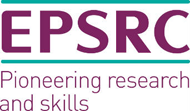Liam Wright
Liam Wright
Liam joined the CDT in September 2015 having previously completed a Masters in Physics at the University of Glasgow.
CDT PhD Project:
Mapping Plasmonic Excitations of Patterned TiN Nano-elements in the Scanning-transmission Electron Microscope
Supervisors:
Dr Donald MacLaren, University of Glasgow
Professor Robert Bowman, Queen's University Belfast
Metamaterials are patterned nanoscale structures that can convert incident electromagnetic radiation into electronic excitations, and thereby manipulate, channel and re-emit that radiation in a controlled manner. They have potential applications in optoelectronics, sensing, biomedicine, communications and even Harry Potter-style invisibility cloaks. These structures are also essential to the development of heat-assisted magnetic data recording (HAMR), which relies upon the incorporation of plasmonic antennae into the hard disk drive’s read head. This project will investigate the functionality of such antenna by probing their plasmonic functionality directly within the electron microscope. The aim will be to correlate the antenna’s functionality to structural details including its precise size, shape, material and dielectric environment. A key motivation of the study is that electron microscopy allows the impact of nano-scale structural features and plasmonic dark-modes to be assessed directly, two aspects that are challenging to study with optical (ie. photon-based) techniques. A further motivation is that the vast majority of the literature in this area has focused on the plasmonic excitations of noble transition metals, particularly gold: studies of TiN and related elements could, therefore, be ground-breaking.
The first aspect of the project will be to characterise and analyse EELS data collected from prototypical noble metal patterned elements using the Glasgow JEOL ARM electron microscope. This will focus on accurate extraction of the plasmonic signal from the typically strong experimental background, and correlation of the data to structural details determined by atomic force microscopy. The design and patterning of the metamaterial elements will ideally draw input from Seagate, an industrial partner in the project. A second aspect will then be to construct accurate finite element simulations of the metamaterials, using realistic structural profiles to generate simulated EELS data sets for comparison with experimental data. By comparison of experiment and simulated datasets, we will be able to correlate structural and electronic details with the plasmonic response and thereby assist in the design of optimised elements. There is scope for the project to extend into aspects of developing refined data processing protocols. Experimental advances beyond the current ‘state of the art’ include the analysis of realistic, imperfect structures that are embedded within a dielectric environment; and potentially a full analysis of the plasmonic response of realistic HAMR devices provided by Seagate. In the later stages of the project, the monochromated electron microscope at the national SuperSTEM facility at Daresbury may be employed to improve the energy resolution of the spectral analysis. Together, these aspects will combine towards the development of improved HAMR devices, with direct impact on the technologies being developed by Seagate.
The project is directly related to the EPSRC 'photonic materials and metamaterials' research area but also touches on aspects of the following: Condensed matter - electronic structure; Light-matter interactions and optical phenomena; and materials engineering - metals & alloys. In addition to the substantial facilities at Queen's University Belfast, it will make use of the EPSRC-funded infrastructure of the James Watt Nanofabrication Centre and Kelvin Nanocharacterisation Centre of the University of Glasgow.





